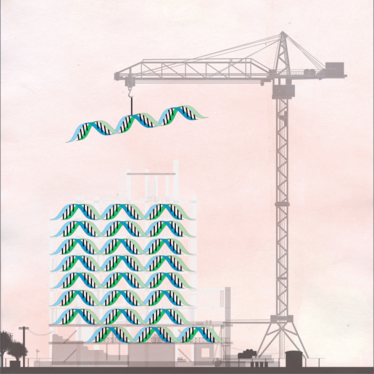Building the Human Genome
The story behind the ambitious plan to take genome synthesis into uncharted waters
Twenty-six years after the launch of the Human Genome Project (HGP-read), top geneticists hatched a plan to create the first synthetic human genome (1). The mammoth undertaking has been designated The Human Genome Project-Write (HGP-write), and researchers hope to properly launch the project later in 2016.

What sparked the idea for the bold project? Jef Boeke, first author and Founding Director of the Institute for Systems Genetics at NYU Langone, explains: “Andrew Hessel from Autodesk Research wrote a paper in 2012 that I wasn’t even aware of at the time. It was an opinion piece proposing that the synthesis of the human genome should be the next big thing. But, as he put it himself, the paper was essentially met by silence. Nobody listened or reacted.”
At last year’s SC 2.0 conference in New York, Hessel brought up the idea again, this time to a warmer reception. “I was initially skeptical, but Nancy Kelly – who helped me organize SC 2.0 – and George Church (renowned geneticist) were excited about the prospect, so they started discussing aspects of it with Hessel,” says Boeke.
Curiosity drew Boeke into their conversations and he too became increasingly enthusiastic. From there, the group began brainstorming ideas for what the project would involve and the best way to move forward, leading to a position paper in Science.
Boeke brings valuable experience in genome synthesis – a decade ago he began synthesizing a yeast genome, a project that is still ongoing. “We believe that it would be possible to do the same sort of iterative design process I’ve been using with the yeast project in HGP-write, but it’s certainly not the only option. If we’re going to scale up, we need to figure out a way to parallelize multiple teams as we did with yeast. But it’s still early days, and what we can do or how fast we can do it obviously depends on funding,” says Boeke.
And it’s not just funding that the team have to consider. “There’s a whole human bioethics issue where we, at some level, need permission or buy-in from society to go down this road,” says Boeke. “It will be a far-reaching undertaking so we need the public to understand and accept the ethics – or the project could end before it properly begins.”
The team hope the project will bring down the cost of research and technology in general, much like HGP-read.
How long will HGP-write take? That’s very much up for debate – but HGP-read took around 13 years in total.
- JD Boeke et al., “The Genome Project-Write”, Science, 353, 126-127 (2016). PMID: 27256881.
My fascination with science, gaming, and writing led to my studying biology at university, while simultaneously working as an online games journalist. After university, I travelled across Europe, working on a novel and developing a game, before finding my way to Texere. As Associate Editor, I’m evolving my loves of science and writing, while continuing to pursue my passion for gaming and creative writing in a personal capacity.















